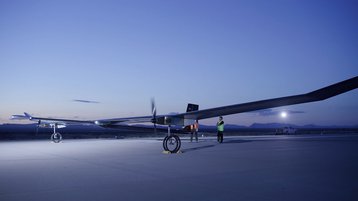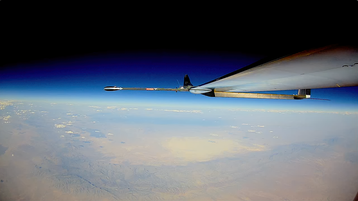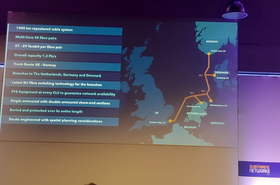BAE Systems has conducted the first successful stratospheric test flight of its High Altitude Pseudo-Satellite (HAPS) drone platform.
The defense company said its PHASA-35 drone achieve altitudes of more than 66,000 feet in a 24-hour flight, reaching the stratosphere above New Mexico before landing successfully.
Designed by BAE Systems’ subsidiary Prismatic Ltd and in development since 2018, the solar-powered PHASA-35 has a 35-meter wingspan and carries a 15kg payload. It will be able to carry communications payloads including 4G and 5G, as well as observation and surveillance equipment.
“This is a fantastic achievement for everyone involved and shows the commitment of BAE Systems to invest in new technologies and markets,” said Dave Corfield, CEO of Prismatic Ltd. “PHASA-35’s first stratospheric flight demonstrates that this vehicle is on track to become the go-to system for long endurance, high altitude and communications applications in the future.”
He continued: “The successful trials are a testament to the hard work of the fantastic team that we have built over the last couple of years within Prismatic and across our partner companies including Piran, Amprius, Microlink, Honeywell, PMW Dynamics, and the Met Office. I look forward to the next steps as we develop this unique system.”
BAE’s Persistent High Altitude Solar Aircraft (Phasa-35) had its first non-stratospheric test flight in February 2020. In 2021 the company told DCD it is hoping to have a market-ready product in three to four years’ time.
BAE Systems acquired UK-based Prismatic in September 2019, having worked together on the development of PHASA-35 since 2018. The program now sits within FalconWorks, a new research and center development within BAE Systems’ Air sector, designed to deliver new air capabilities to its customers.
The latest trials took place from Spaceport America in New Mexico, flying in the White Sands Missile Range, and are sponsored by the US Army Space and Missile Defense Command Technical Center. This test flight at White Sands Missile Range was coordinated and supported by personnel attached to Naval Surface Warfare Center, Port Hueneme Division, Detachment White Sands.
Cliff Robson, group managing director for BAE Systems’ Air Sector, added: “PHASA-35 is breaking new ground - opening up the stratosphere to new possibilities. The team, which brings together BAE Systems’ know-how from across the globe with innovative solar and power management technologies, demonstrated tremendous commitment and ambition as they tackled the challenges associated with novel technologies and approaches. This partnership approach is key to our ability to enhance our defense expertise with new thinking and technologies.”
HAPS – whether they be airships, balloons, or fixed-wing drones – offer a way to provide connectivity to rural and unconnected areas from high altitudes without the upfront costs of cell towers or satellites or the need for specialist receivers.
Though Google’s now-defunct Project Loon was the highest-project HAPS project, a number of firms including Stratospheric Platforms and SoftBank-owned HAPSmobile are looking to develop their own high-altitude platforms.
Rival defense firm Airbus is close to launching commercial operations of its own HAPS platform.
Originally designed by defense group Qinetiq in 2003, the platform was sold to Airbus in 2013, Zephyr is the company's solar-powered HAPS platform. The latest iteration, Zephyr Z8, has a wingspan of 25m while weighing only 75kg.
Airbus recently formed a subsidiary known as Aalto HAPS to offer commercial deployments and has signed deals with Bermuda-based mobile operator Paradise Mobile and Saudi telco STC.








